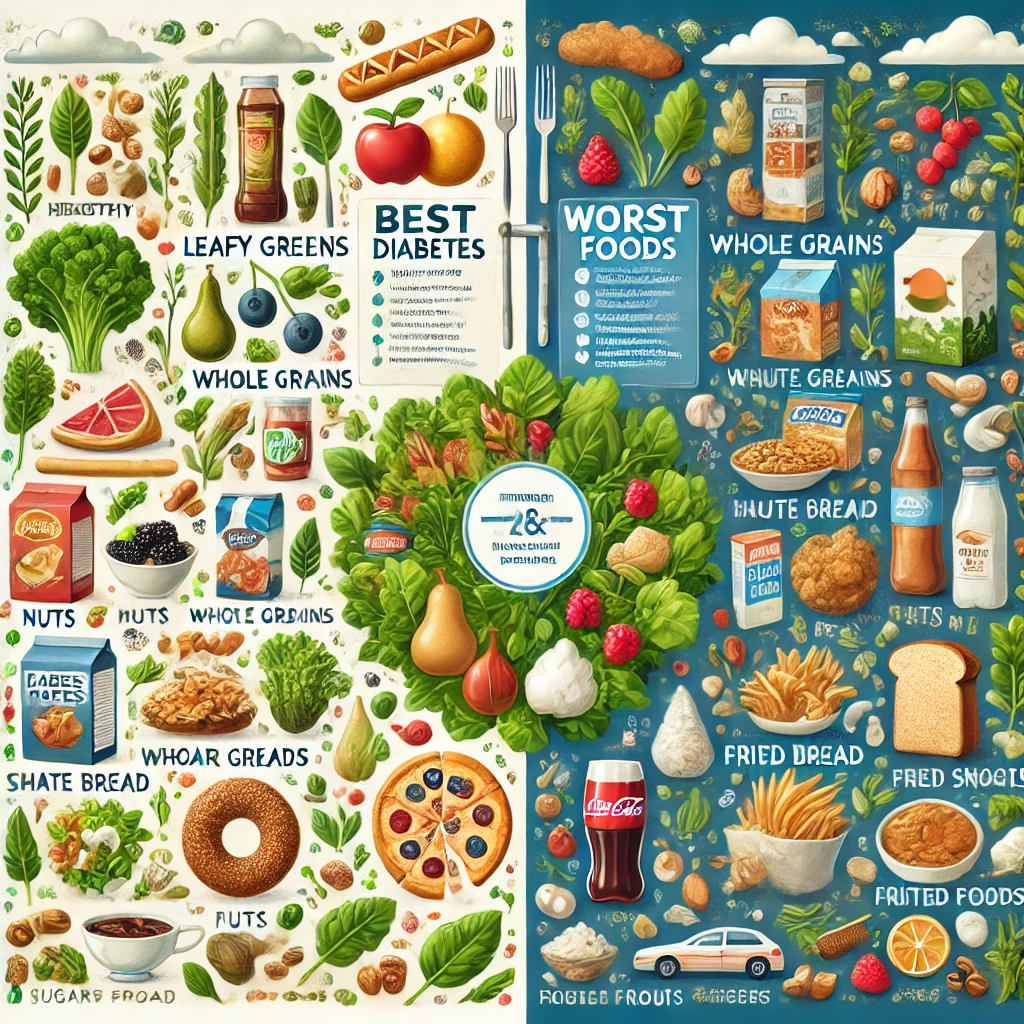Diabetes Diet Plan: How to Manage Carbs for Better Blood Sugar
Introduction
Managing diabetes effectively starts with understanding the role of carbohydrates in blood sugar control. Carbs have a significant impact on glucose levels, making it essential for diabetics to monitor their intake carefully. But how can you balance carbs in your diet without feeling deprived?
In this guide, we will explore the best strategies for carbohydrate counting for diabetes, the glycemic index and diabetes management, and the impact of carbs on blood glucose levels. Whether you’re newly diagnosed or looking for better ways to manage diabetes, this article will provide actionable insights to help you make informed dietary choices.
Understanding Carbohydrates and Blood Sugar
Carbohydrates are the body’s primary source of energy, but they also have the most significant impact on blood sugar levels. There are three main types of carbohydrates:
- Sugars – Found in fruits, dairy, and processed foods.
- Starches – Present in grains, legumes, and starchy vegetables.
- Fiber – Found in whole grains, vegetables, and fruits, and it helps slow digestion.
Since different types of carbs affect blood sugar levels differently, managing carb intake is key to maintaining stable glucose levels.
Carbohydrate Counting for Diabetes
Carbohydrate counting (carb counting) is a technique used to track daily carb intake and adjust meals accordingly. This method is especially useful for those taking insulin.
How to Count Carbs
- Determine your daily carb allowance – Work with a healthcare provider to decide how many grams of carbs you should consume per meal.
- Read food labels – Check serving sizes and total carbohydrates on packaging.
- Use carb counting apps – Apps like MyFitnessPal and Carb Manager can help track intake.
- Monitor blood sugar levels – Adjust carb intake based on your glucose readings.
Carb intake recommendations for diabetics generally range between 45–60 grams per meal, depending on individual needs.
Glycemic Index and Diabetes Management
The glycemic index (GI) measures how quickly a carbohydrate-containing food raises blood sugar levels. Foods are ranked as:
- Low GI (55 or less) – Examples: lentils, quinoa, non-starchy vegetables.
- Medium GI (56–69) – Examples: brown rice, whole wheat bread, sweet potatoes.
- High GI (70 or above) – Examples: white bread, soda, candy.
To stabilize blood sugar, prioritize low-GI foods and pair carbs with protein and healthy fats to slow glucose absorption.
Managing Carbs in a Diabetic Diet
To successfully manage carbs, follow these diabetes meal planning strategies:
1. Choose Diabetes-Friendly Carbohydrate Sources
- Whole grains: Brown rice, quinoa, oats
- Non-starchy vegetables: Broccoli, spinach, bell peppers
- Legumes: Lentils, chickpeas, black beans
- Dairy: Greek yogurt, cottage cheese
2. Avoid Processed and Refined Carbs
- White bread and pasta
- Sugary cereals
- Soft drinks and fruit juices
- Baked goods like cookies and pastries
3. Pair Carbs with Protein and Fiber
Combining protein, fiber, and healthy fats with carbs helps slow digestion and prevent blood sugar spikes. For example:
- Oatmeal with nuts and seeds
- Whole grain toast with avocado and eggs
- Brown rice with grilled salmon and vegetables
Impact of Carbs on Blood Glucose Levels
Different carbs impact blood sugar in various ways. Understanding these effects can help in balancing macronutrients for diabetes effectively.
- Fast-digesting carbs (e.g., white bread, candy) cause rapid blood sugar spikes.
- Slow-digesting carbs (e.g., whole grains, legumes) provide a steady glucose release.
- Fiber-rich carbs (e.g., leafy greens, nuts) help maintain stable blood sugar levels.
Diabetes Meal Planning Strategies
A well-planned diet helps in maintaining stable blood sugar levels. Here’s a sample diabetes-friendly meal plan:
Breakfast:
- Scrambled eggs with spinach and whole grain toast
- Greek yogurt with nuts and berries
Lunch:
- Grilled chicken salad with mixed greens and quinoa
- Lentil soup with whole grain crackers
Dinner:
- Baked salmon with roasted vegetables and brown rice
- Stir-fried tofu with broccoli and cauliflower rice
Snacks:
- Almonds and string cheese
- Hummus with cucumber slices
FAQs
1. How many carbs should a diabetic eat per meal?
Most diabetics should aim for 45–60 grams of carbs per meal, but individual needs vary. Consult a healthcare provider for personalized advice.
2. Are all carbs bad for diabetes?
No! Whole carbs like vegetables, legumes, and whole grains are beneficial. Avoid processed carbs and added sugars.
3. What’s the best way to monitor carb intake?
Use food labels, apps, and meal planning tools to track daily carbohydrate intake.
4. Can a low-carb diet help manage diabetes?
Yes! A low-carb diet for blood sugar control can help reduce insulin resistance and maintain stable glucose levels.
5. Should I completely avoid high-GI foods?
Not necessarily. If you eat high-GI foods, pair them with protein or fiber to minimize their impact on blood sugar.
Conclusion
Effectively managing carbs in a diabetic diet is key to maintaining healthy blood sugar levels. By focusing on low-GI foods, fiber-rich carbs, and balanced meals, you can achieve better glucose control and improve overall health.
If you’re looking for personalized meal planning tips, consult a registered dietitian or healthcare provider.
📩 Subscribe to our newsletter for more expert-backed diabetes tips and healthy meal ideas!
